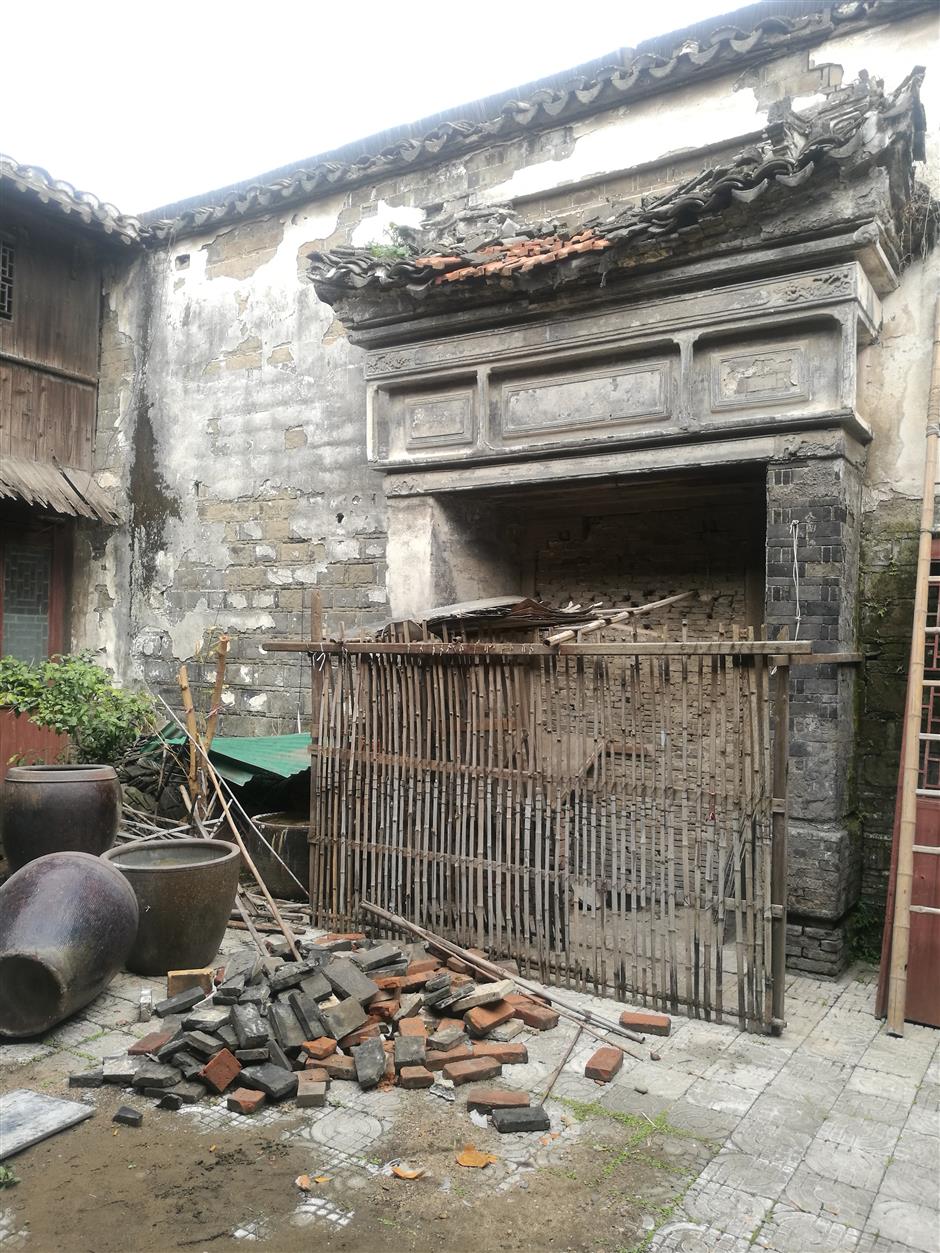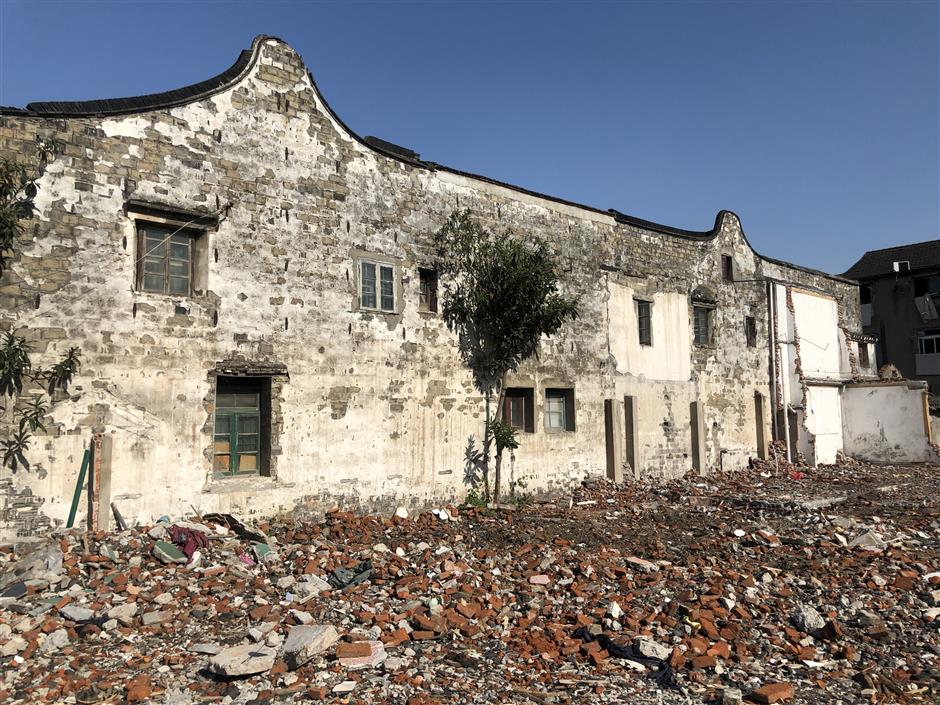Historic compounds saved from demolition

An interior view of the Cao residence (above), one of two Qing Dynasty era structures tipped for preservation. It will be protected, along with the Zhu residence (below).

Two residential compounds in the Pudong New Area are safe from the wrecking ball after being dated to the Qing Dynasty (1644-1911), and will soon be given protected status, local officials said yesterday.
“In March, we gathered experts from universities, architectural companies, the area’s urban planning and land administration bureau, as well as construction authorities to investigate the buildings’ age, architectural features, layout and craftsmanship,” said Zhu Di, deputy chief of the area.
“They confirmed the structures have high cultural and historical value as typical ancient folk houses in Pudong. The buildings meet standards to be recognized as immovable cultural relics, and it was agreed to list them as protected units,” he said, adding that other government departments are now formalizing their protected status.
Song Feibo, deputy director of the area’s cultural heritage protection administration, said the buildings were once residences of the Cao family. The family are believed to be descendants of general Cao Bin, who helped Zhao Kuangyin found the Northern Song Dynasty (960-1127). One of the buildings was later sold to a family named Zhu, experts discovered.
The Cao and Zhu compounds, which cover areas of 1,000 and 700 square-meters respectively, have been damaged by time, disaster and modification over recent decades.
Investigations found that the Cao residence used to have three sections, but the middle section was bombed by the Japanese and later replaced by other structures. Experts say these structures should be demolished to restore the compound’s original appearance. Some of the residence’s original building materials are missing and believed stolen.
The old Zhu residence is occupied by some families and there are illegal structures attached to it.
Zhu said the area’s culture administration will supervise the government of Gaohang Town, where the buildings are located, as the compounds are repaired, protected and utilized.
“We will try our best to preserve the buildings connected with development of the surrounding areas so these cultural relics can be integrated into local life,” said Zhu.
Last year, the compounds were embarked for demolition to make way for commercial development, but the local government suspended demolition in November after architectural experts noted their historical significance and called for preservation.
The township government then invited experts from Tongji University to examine the buildings and create protection plans.
It also deployed staff and installed surveillance cameras to safeguard the area against damage or theft.
Development plans for the area are now being adjusted to accommodate preservation of the historic residences.
The buildings also attracted attention from local political advisers, who submitted a proposal calling for their preservation during the annual conferences of the city’s political advisory body.
Zhu said the Pudong government has drafted a regulation to enhance protection of immovable cultural relics by defining the responsibilities of each government department in this regard.
He also said cultural heritage preservation has been named the top task for Pudong this year, with the ultimate aim being the establishment of long-term protection schemes.
Shanghai now has 3,435 immovable cultural relics on the national, city and district levels.















